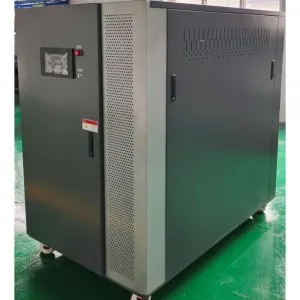Novemba . 20, 2024 19:04 Back to list
casting ductile iron
The Significance of Casting Ductile Iron in Modern Manufacturing
Ductile iron, also known as nodular cast iron or spheroidal graphite iron, has gained a remarkable reputation in the manufacturing industry due to its exceptional mechanical properties and versatility. This alloy is produced through a casting process which allows for the creation of complex shapes and dimensions suitable for a wide range of applications. The casting of ductile iron represents not just an evolution of traditional iron casting techniques but also a response to the increasing demand for materials that combine strength, ductility, and resistance to wear and corrosion.
The Casting Process of Ductile Iron
The production of ductile iron involves the addition of a small amount of magnesium to molten cast iron. This addition alters the structure of the graphite within the iron, transforming it from flake-like formations typical in gray iron to spheroidal formations, which provide enhanced mechanical properties. The primary methods for casting ductile iron include sand casting, investment casting, and centrifugal casting. Among these, sand casting is the most common due to its cost-effectiveness and flexibility in producing larger parts.
In sand casting, the process begins with creating a mold made of sand and binder. After preparing the molds, molten ductile iron is poured into the cavity and allowed to cool and solidify. The cooling process is crucial, as it affects the final properties of the cast product. Once the metal has solidified, the molds are removed, resulting in a rough casting that may require further machining to meet precise specifications.
Mechanical Properties
Ductile iron exhibits superior mechanical properties compared to other iron alloys. It offers high tensile strength, excellent ductility, and good fatigue resistance. This combination allows components made from ductile iron to withstand significant stress and deformation without fracturing, making it an ideal choice for critical applications such as automotive parts, pipelines, and heavy machinery components.
casting ductile iron

One notable aspect of ductile iron is its ability to absorb shock and vibration, which is due to its unique microstructure and the presence of spheroidal graphite. These properties are particularly valuable in applications where durability and resistance to impact are paramount, such as in the construction of machinery bases and frames.
Applications in Industry
The versatility of ductile iron makes it suitable for a myriad of applications across various industries. In the automotive sector, ductile iron is extensively used in the production of engine blocks, crankshafts, and suspension parts. These components benefit from the material's high strength-to-weight ratio and fatigue resistance, enhancing vehicle performance and longevity.
In the construction industry, ductile iron is often used for manufacturing pipelines and fittings, as it exhibits excellent resistance to corrosion, particularly when treated with protective coatings. Its favorable mechanical properties make it an ideal material for long-lasting water and sewage systems, providing safety and reliability in urban infrastructure.
Furthermore, ductile iron’s application extends to the wind energy sector, where it is used in the production of wind turbine components. Its ability to endure harsh environmental conditions, combined with its lightweight nature, contributes to the efficiency and effectiveness of renewable energy solutions.
Conclusion
The casting of ductile iron represents a significant advancement in materials engineering, providing manufacturers with the ability to create resilient components that meet the demands of modern applications. It bridges the gap between traditional cast iron and modern engineering necessities, integrating strength, ductility, and versatility into a single material. As industries continue to evolve and require more complex parts with enhanced performance characteristics, the role of ductile iron is likely to grow, solidifying its place as a crucial material in the manufacturing landscape. With ongoing research and development, the future of ductile iron casting looks bright, promising innovations that may further enhance its properties and expand its applications.
-
Durable Centrifugally Cast Iron Water Main Pipe
NewsAug.11,2025
-
Centrifugally Cast Iron Water Main Pipes for Reliability
NewsAug.10,2025
-
High-Quality Centrifugally Cast Iron Water Main Pipes
NewsAug.09,2025
-
Durable Cast Iron Water Main Pipe & Drainage Solutions
NewsAug.08,2025
-
Buy Cast Iron Pipe: Premium Ductile Iron & Drain Solutions
NewsAug.07,2025
-
Durable Cast Iron Water Main Pipe | Buy Ductile Pipe
NewsAug.06,2025


